Atrial fibrillation (AFib) is the most common sustained cardiac arrhythmia and is associated with an increased risk of stroke, heart failure, and mortality. Over the past few decades, catheter ablation has emerged as a promising treatment for AFib, offering symptom relief and improved quality of life for many patients. In this article, we explore the landmark clinical trials that have played crucial roles in advancing the field of AFib ablation and informing best practices.
Radiofrequency Ablation vs. Antiarrhythmic Drugs as First-Line Treatment of Symptomatic Atrial Fibrillation (RAAFT) (2005)
The RAAFT trial was one of the first randomized controlled trials to compare the efficacy of radiofrequency catheter ablation (RFA) to antiarrhythmic drug (AAD) therapy as first-line treatment for symptomatic paroxysmal AFib. The primary endpoint was the time to first AFib recurrence.
Results from the RAAFT trial showed that RFA was more effective than AAD therapy in preventing AFib recurrence and reducing symptoms. This study laid the foundation for the increasing use of catheter ablation in AFib management.
Catheter Ablation for the Treatment of Atrial Fibrillation (CABANA) (2019)
The CABANA trial was a large-scale, multicenter study designed to compare catheter ablation to drug therapy in patients with symptomatic AFib. The primary endpoint was a composite of death, disabling stroke, serious bleeding, or cardiac arrest.
Although the CABANA trial did not demonstrate a significant reduction in the primary composite endpoint, it showed that catheter ablation was associated with a lower rate of AFib recurrence and improvements in quality of life. This trial highlighted the potential benefits of catheter ablation in a broader AFib population.
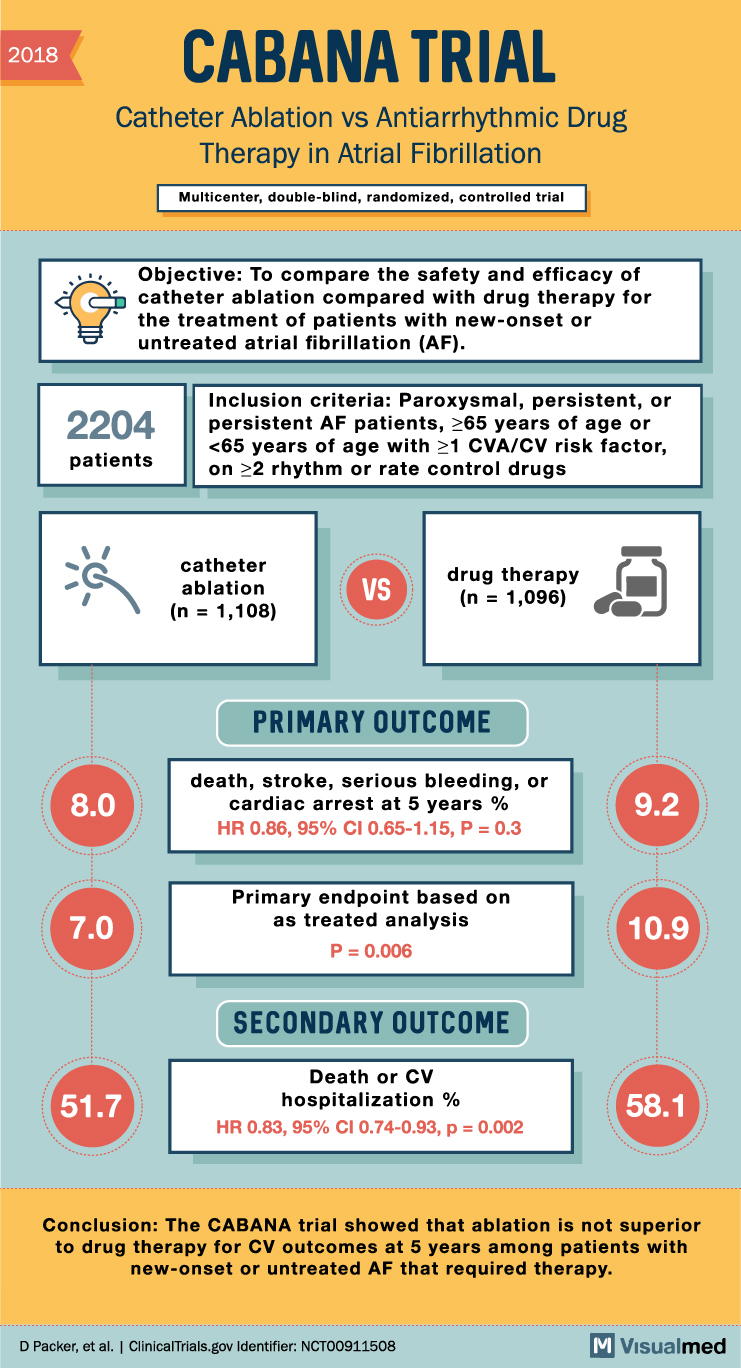
Cryoballoon vs. Radiofrequency Ablation for Paroxysmal Atrial Fibrillation (FIRE AND ICE) (2016)
The FIRE AND ICE trial compared the safety and efficacy of cryoballoon ablation (a form of pulmonary vein isolation) to RFA in patients with drug-refractory paroxysmal AFib. The primary efficacy endpoint was the time to first AFib recurrence, atrial flutter, or atrial tachycardia.
The results of the FIRE AND ICE trial demonstrated that cryoballoon ablation was non-inferior to RFA in terms of efficacy and safety. This study established cryoballoon ablation as a viable alternative to RFA in the treatment of paroxysmal AFib.
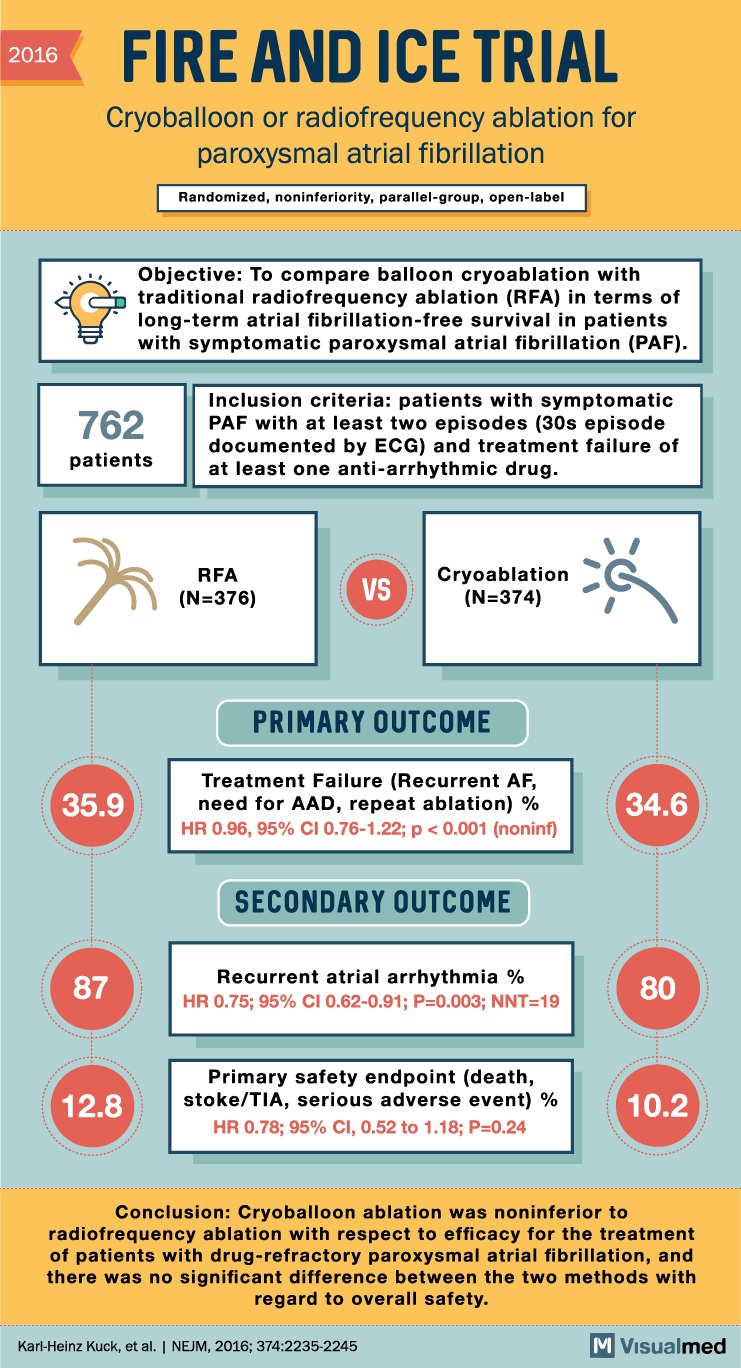
Ablation vs. Amiodarone for Treatment of Atrial Fibrillation in Patients with Congestive Heart Failure and an Implanted ICD (AATAC) (2016)
The AATAC trial compared catheter ablation to amiodarone therapy in patients with persistent AFib, congestive heart failure, and an implanted implantable cardioverter-defibrillator (ICD). The primary endpoint was the rate of AFib recurrence at 24 months.
The AATAC trial found that catheter ablation was more effective than amiodarone in maintaining sinus rhythm and reducing the rate of AFib recurrence. Additionally, catheter ablation was associated with fewer hospitalizations and a lower incidence of ICD shocks.
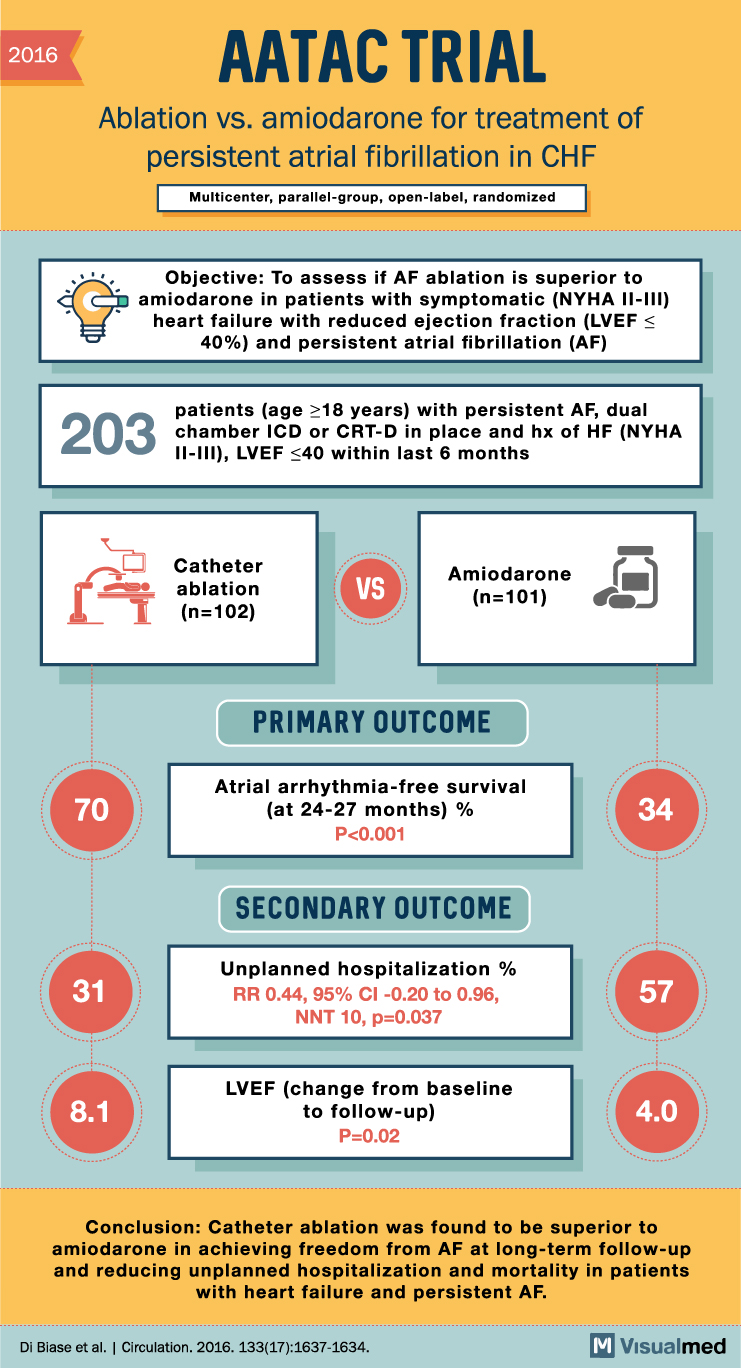
Early Treatment of Atrial Fibrillation for Stroke Prevention Trial (EAST-AFNET 4) (2020)
The EAST-AFNET 4 trial evaluated the impact of early rhythm control therapy, including catheter ablation and AADs, compared to usual care in patients with recently diagnosed AFib. The primary outcome was a composite of cardiovascular death, stroke, worsening heart failure, or acute coronary syndrome.
The results of the EAST-AFNET 4 trial showed that early rhythm control therapy led to a significant reduction in the primary composite outcome. This study highlighted the importance of early intervention in AFib management and suggested that early catheter ablation might be beneficial for reducing long-term cardiovascular events.
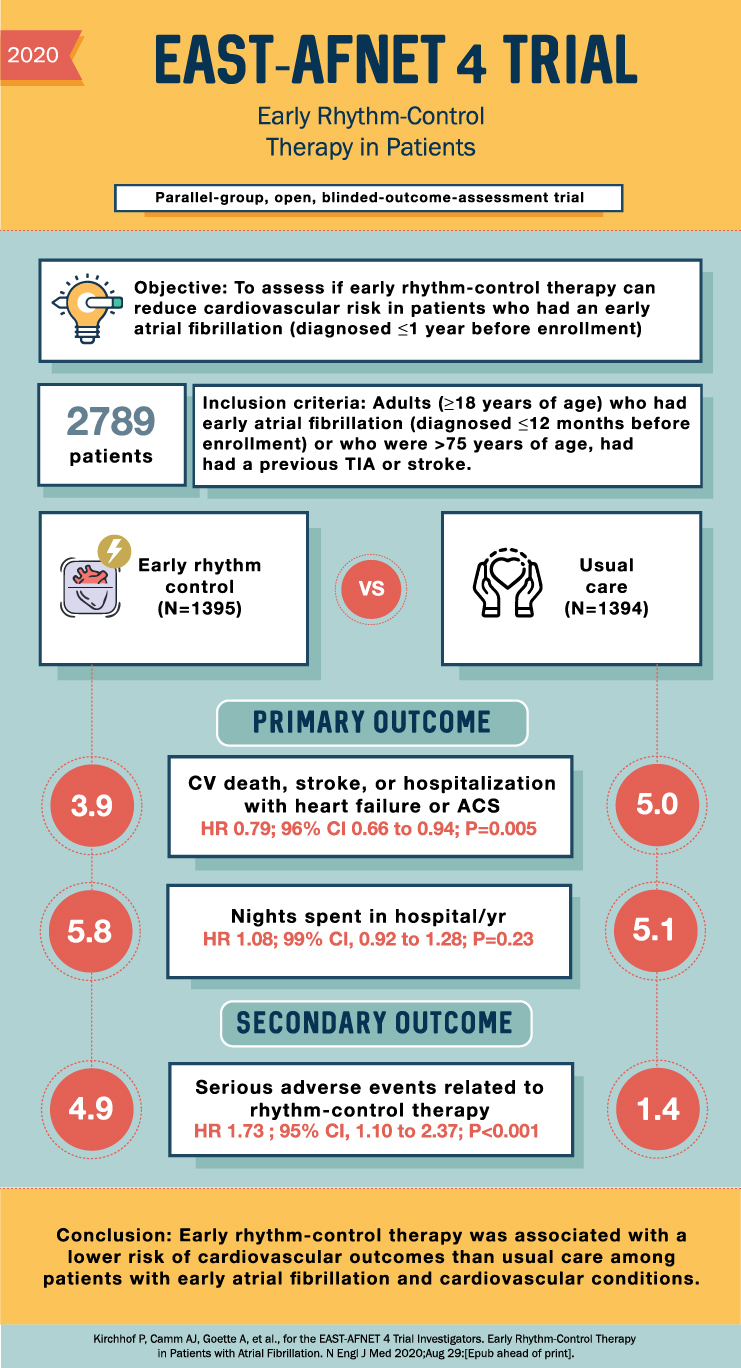
Catheter Ablation vs. Medical Therapy for Atrial Fibrillation in Heart Failure (CASTLE-AF) (2018)
The CASTLE-AF trial compared catheter ablation to medical therapy in patients with AFib and heart failure with reduced ejection fraction (HFrEF). The primary composite endpoint included all-cause mortality and worsening heart failure events.
The CASTLE-AF trial demonstrated that catheter ablation significantly reduced the primary composite endpoint in patients with AFib and HFrEF. This study reinforced the role of catheter ablation in managing AFib in heart failure patients, emphasizing the potential benefits of this treatment approach in improving clinical outcomes.
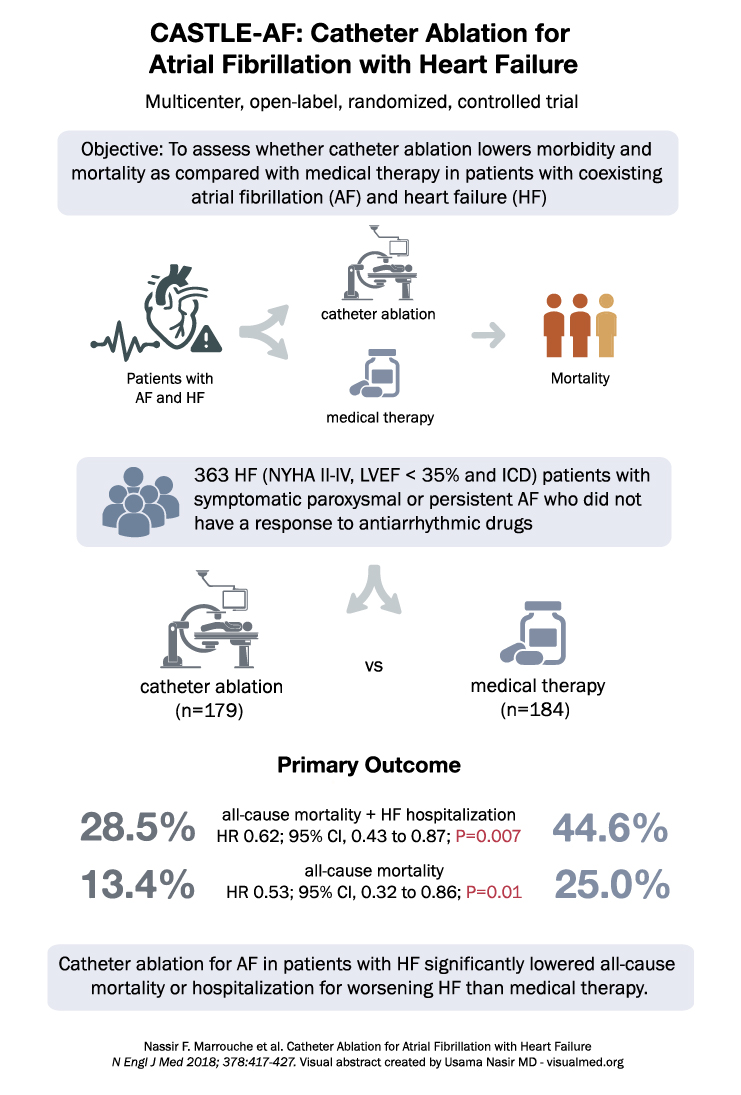
Conclusion
Landmark clinical trials in AFib ablation, such as RAAFT, CABANA, FIRE AND ICE, AATAC, EAST-AFNET 4, and CASTLE-AF, have significantly advanced our understanding and treatment of this common cardiac arrhythmia. These trials have helped establish the role of catheter ablation in various patient populations, demonstrated the effectiveness of alternative ablation techniques, and highlighted the importance of early intervention in managing AFib.
As research in the field of AFib ablation continues to evolve, future clinical trials will undoubtedly refine our approach to treating this complex condition. By building upon the knowledge gained from these landmark trials, we can strive to improve patient outcomes and quality of life for those affected by atrial fibrillation.